Modernize to move forward.
Employment Branding Report 2022
Table of contents
If I had to describe the last 12 months in one word, it’s “change.”

The best employment branding resources — straight to your inbox.
The current market climate
Record job vacancies, global skills shortages, high turnover rates, changing candidate and employee expectations and high inflation are all having an impact – simultaneously. As a global community, the last two years have consisted of one historical event after another that resulted in a talent market like no other.
Because of the constant change, the solutions to the employer brand challenges we all faced felt more like reactive fixes than long-term, strategic solutions. Fortunately, things are starting to look up. Many companies are putting a renewed focus on their employee value propositions (EVPs), improving working conditions, increasing compensation and emphasizing workplace health and well-being.
With people as the focus, the path forward to a modern employment brand has become clear.
Candidate mindset is shifting
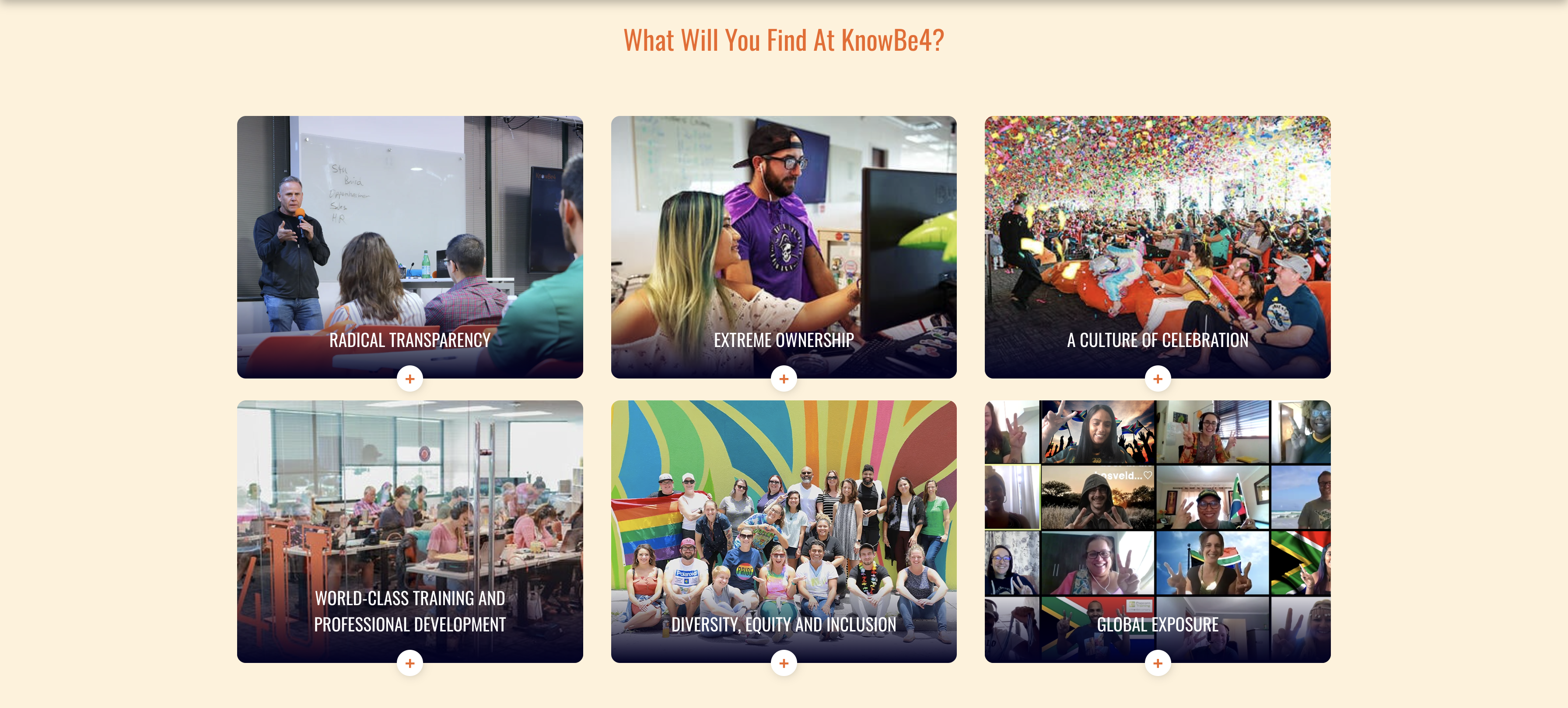
Demand is outpacing supply
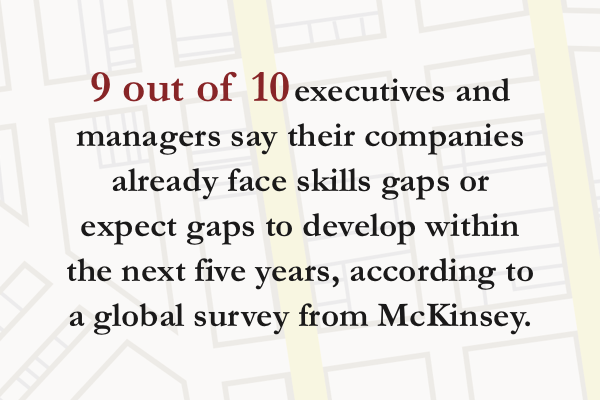
The best employment branding resources — straight to your inbox.
Flexibility in ALL things work-related
Flexibility at work isn’t just about working remotely, although that’s often a popular request. People want to choose working hours that fit around their lives, whether that’s four 10-hour working days or the flexibility to work hours outside the typical 9 a.m. to 5 p.m. In a recent survey, 81% of respondents said the top reason they want flexible jobs is to improve their work-life balance, while 70% said working virtually would improve their mental health.
A real work-life balance
Work-life balance is continually cited as a top-five priority for employees. However, many employers think that if they implement a remote working policy, employees will automatically have a better work-life balance. It doesn’t work like that. Employees at remote-friendly companies are 32% more likely to say they struggle with work-life balance. Employers, therefore, need to ensure their workforce has clear boundaries in place between work and home life. Burnout is real: 41% of workers feel burnt out from work, so it’s important to put measures in place to address it. Well-being programs can help and managers need to be aware of the signs of burnout, so they can step in to help team members who are feeling overwhelmed.
To be able to further their careers
The ability to learn and develop has become a key driver for people considering new roles. So much so that 37% of candidates said they’d be willing to take a pay cut for a chance to learn new skills. Further, the same percentage said that upskilling opportunities are the most important factor when considering a new role, after compensation and benefits. Comprehensive L&D programs play an important role in internal mobility; they help decrease time to hire and reduce recruitment costs. Because internal candidates already know what to expect from their organization, employee satisfaction and retention levels remain high.
To truly belong
Employees want to feel a sense of belonging in the workplace: 62% of jobseekers said they would be more likely to apply for a job if a company is openly committed to improving diversity and inclusion within their workforce. The most important part is how you operationalize it though. Employees and candidates will see right through it if what you say doesn’t align with what you do. Create a culture that encourages all employees to bring their true selves to work. You can do this by including employees of all levels together in your planning, processes and programs. This provides them with the opportunity to have their say. Simply put, everyone’s voice should be heard.
The ability to positively impact society
It is no longer acceptable for companies just to make money; 88% of employees said companies must positively impact society as well. What does this mean for employers trying to attract and retain talent? It means you must be vocal about where you stand on corporate social responsibility (CSR) and environmental, social and governance (ESG) efforts. Let your employees guide what causes you get involved in as passion fuels participation. And document the progress you’re making clearly too so candidates can see it’s a long-term commitment you’ve made to make the world a better place.
Be part of a company that really cares
Well-being was ranked a top workforce trend by 80% of respondents in a recent study. While there are many outlets for well-being, such as virtual exercise sessions, money management webinars or healthy eating contests, the most important thing is for employers to practice empathy. Training leaders to operate with understanding and compassion will positively impact culture and improve retention. After all, employees are humans first and want to be treated with respect.
The best employment branding resources — straight to your inbox.
Recruitment marketing
What does scroll-stopping recruitment marketing look like?

The power of employee voice
In the social media example to the left, a Cisco employee talks about how they appreciate the work-life balance at the company. The post evokes emotion, especially for parents trying to find a healthy work-life balance. This is critical today when you consider 57% of respondents in a recent survey said a lack of healthy work-life boundaries would prevent them from applying or accepting a job and even influence them to quit.
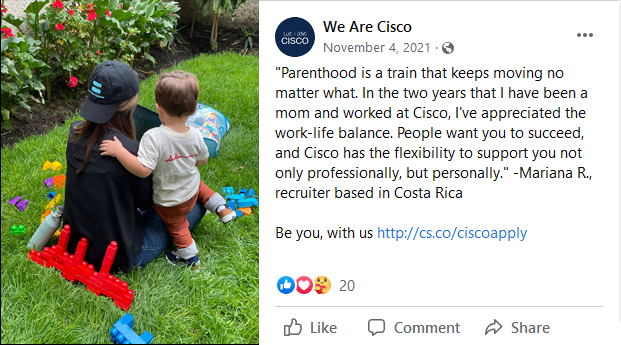
What does the research tell us about employee blog content?
Employee-authored blog posts showcase company culture. And, because they’re written by employees rather than marketing teams, they come across as more authentic. Each one has a unique voice and their own story to tell. Interestingly, small and medium-sized organizations are the most likely to feature employee-authored blog content, which is no doubt because larger companies have more of a hold on their branding guidelines and, therefore, more control of blog content.
The best employment branding resources — straight to your inbox.
Why use accolades?
Accolades can help differentiate one company from another. Awards provide third-party validation, so we were surprised that companies still aren’t taking advantage of an easy win. Employers should place details of award wins prominently throughout their career sites. It’s not wishful thinking to say an award could be the reason why a candidate chooses your company over another; it’s fact.
In it together

Award-winning flexibility

What does the research tell us about awards?
The best employment branding resources — straight to your inbox.
Corporate social responsibility

The role CSR plays in talent attraction and retention
Playing it forward
What does our research tell us about CSR?
The best employment branding resources — straight to your inbox.
Career promotion and job advertising
In tune with candidate desires
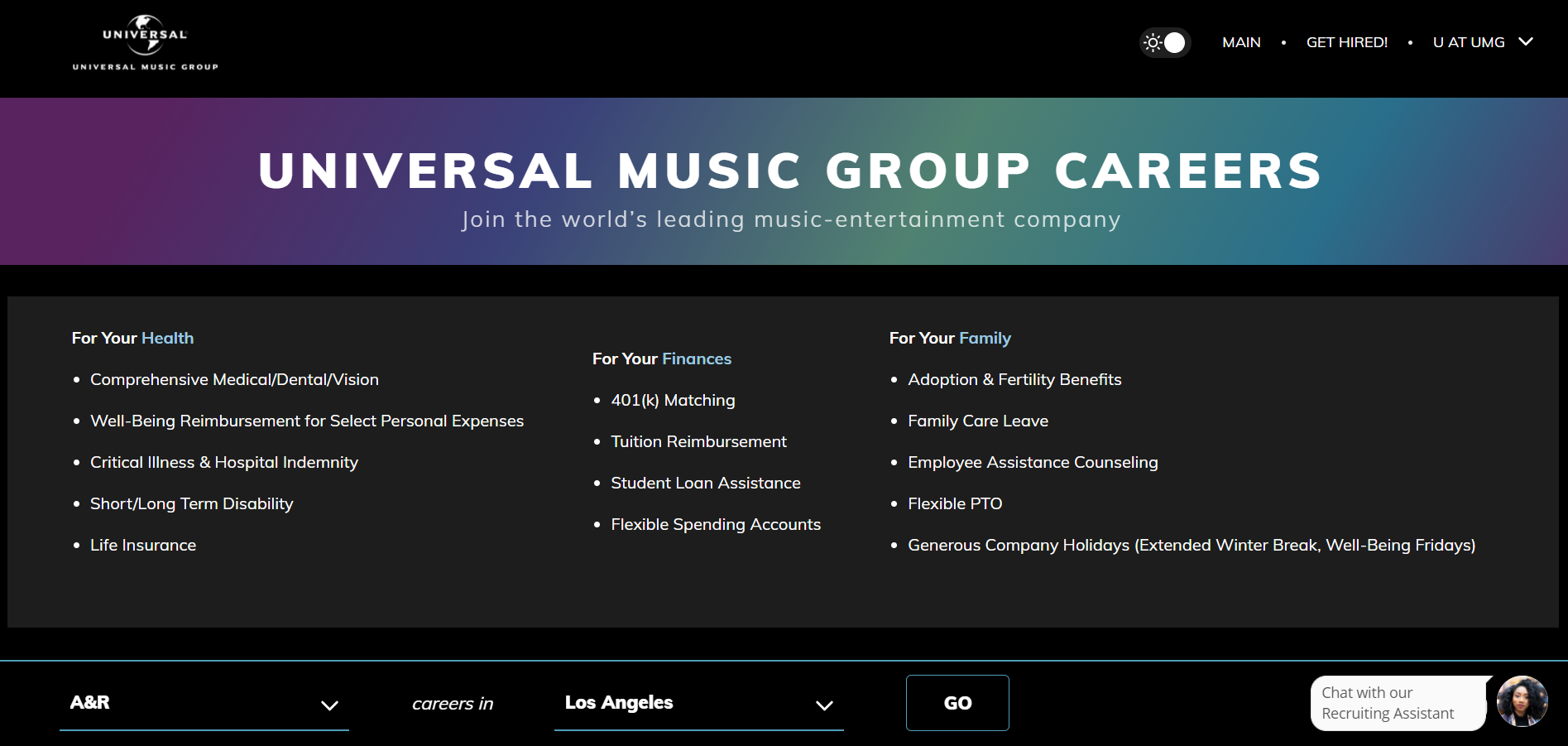
Taking a candidate-first approach
In promoting its career opportunities, Nugget Markets effectively features sustainability and career growth. Its career site is inviting and simple to navigate with plenty of employee photos — ones relevant and reflective of real life, as they feature masked employees. The company also uses clear and timely video employee testimonials on social and sign-on bonuses prominently located on its careers site. This differentiates Nugget Markets while further incentivizing candidates to apply.
An additional note:
Chatbots can accelerate the candidate journey, but not all companies need them. Our research found larger companies were twice as likely to have a chatbot compared to medium companies, and six times more likely compared to small companies. This makes sense as small companies are less likely to be dealing with the same volume of candidates as their larger counterparts, and are more likely to hire through direct networking. Large companies also have bigger budgets to invest in chatbot technology.
The best employment branding resources — straight to your inbox.
What makes a good
career page?
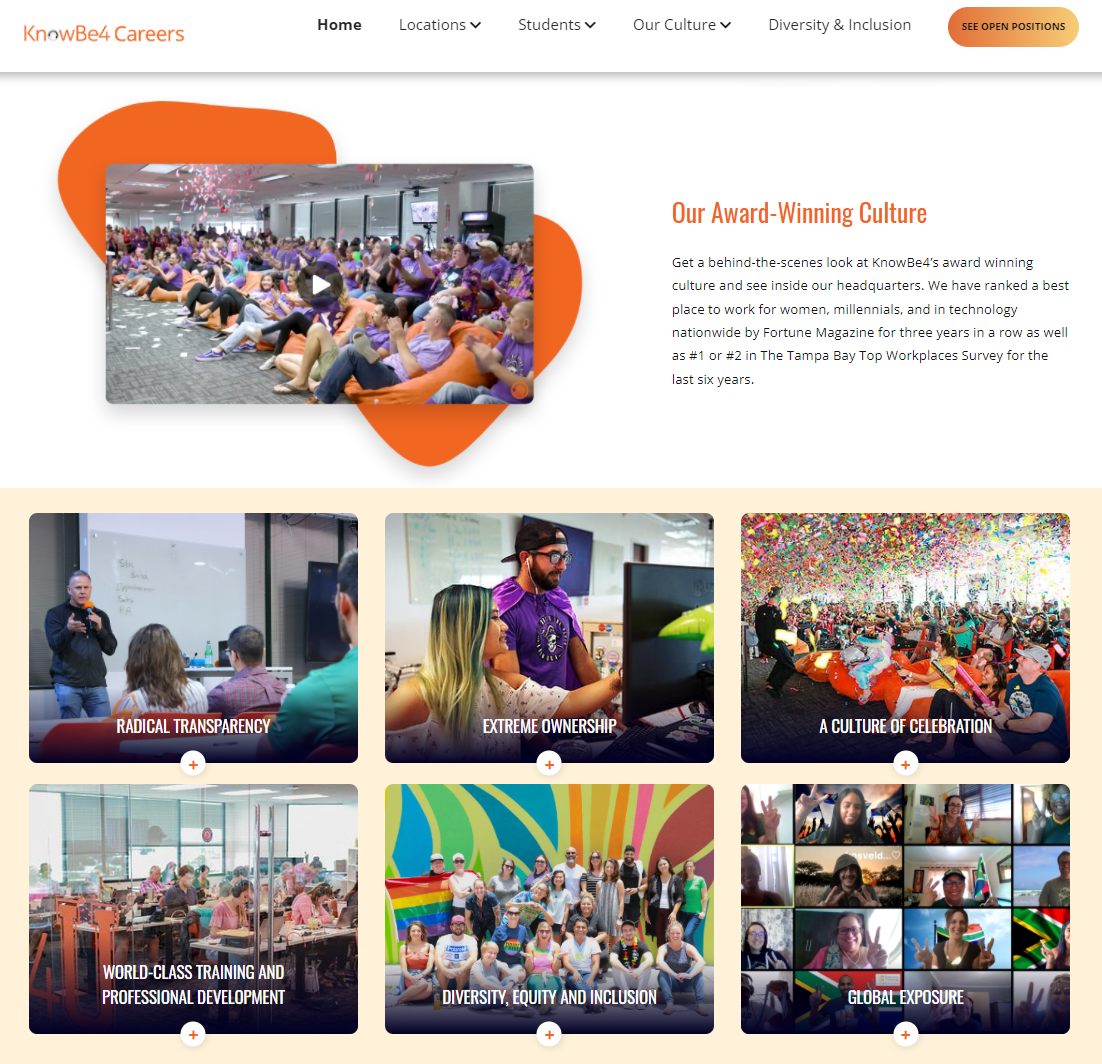
Candidate-first mindset
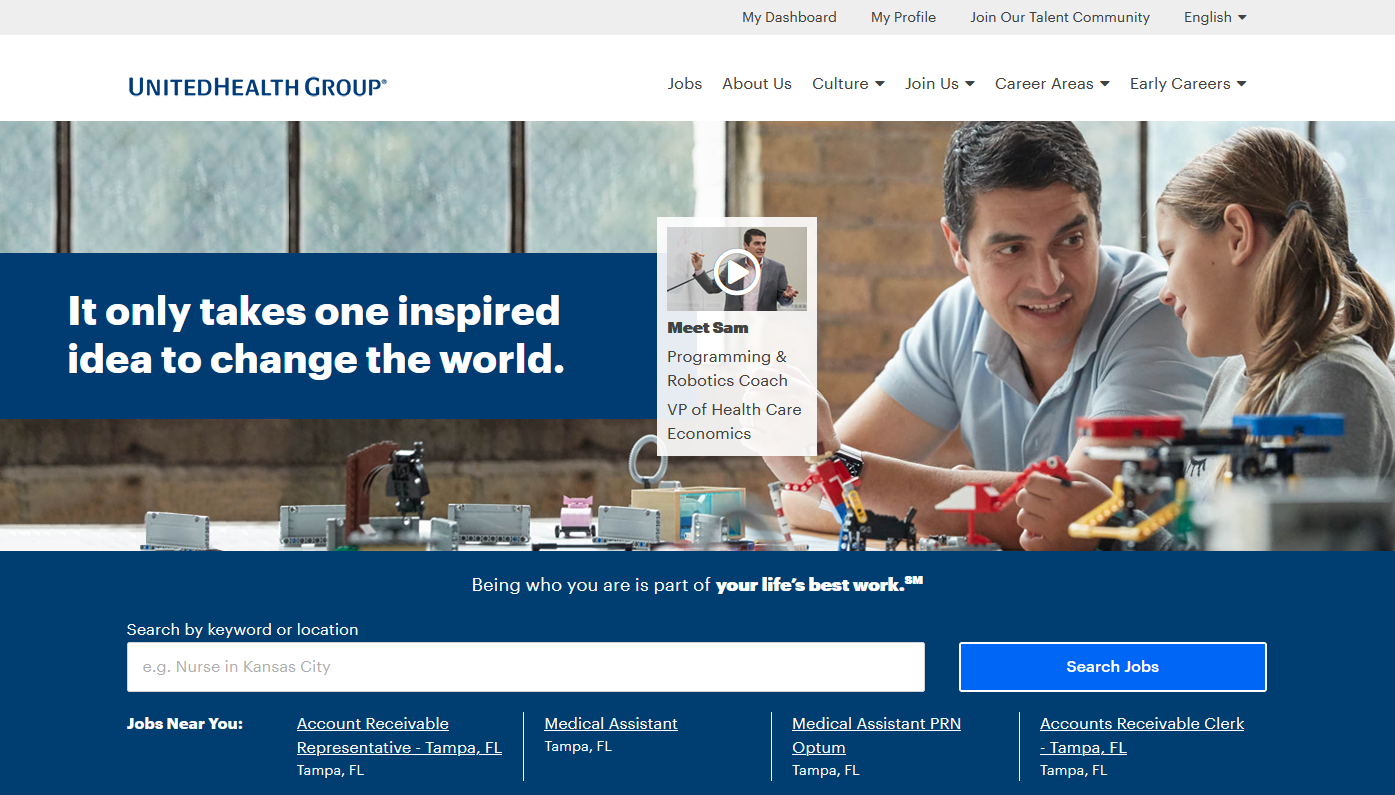
An additional note
Our research revealed just 7% of the organizations evaluated had accessibility settings within their career pages. In the US, 26% of adults have a disability, so employers with career sites that aren’t accessible could potentially be missing out on a large pool of talent. In addition, employers could also be opening themselves up to legal risk as career sites that aren’t accessible risk breaching the Americans with Disabilities Act.
Squaring up

What did the research tell us about career site navigation?
The best employment branding resources — straight to your inbox.
Employee and candidate perspectives
When it comes to employee and candidate perspectives, consistency is key regardless of business size. Candidates don’t want to be bamboozled with corporate content; instead, they want authenticity. And this is why employee-generated content (in real-time) plays such a pivotal role in employment branding.

Taking a candidate-first approach
Stryker’s career site hosts multiple employee-generated videos. Most feature employees in self-shot videos talking about their typical day for a more authentic feel (compared to a highly edited corporate video). The company's career blog also features a mix of employee stories, career advice and Q&As so candidates have a chance to get a real feel for the company culture.
An additional note
Why ditching the jargon speak volumes
Bitwise Industries is a software consulting firm that takes a transparent approach to diversity hiring by speaking directly to candidates. Its job descriptions list diversity stats as a way of showing inclusion is at the heart of business operations. It’s also an effective way to attract all kinds of talent – even for those without a tech background. Prioritizing diversity at the top of the page before it goes into required technologies and job responsibilities creates interest and differentiation in its space from other tech start-ups and firms. This is perfect for a company that fills talent gaps in the tech space through upskilling opportunities.
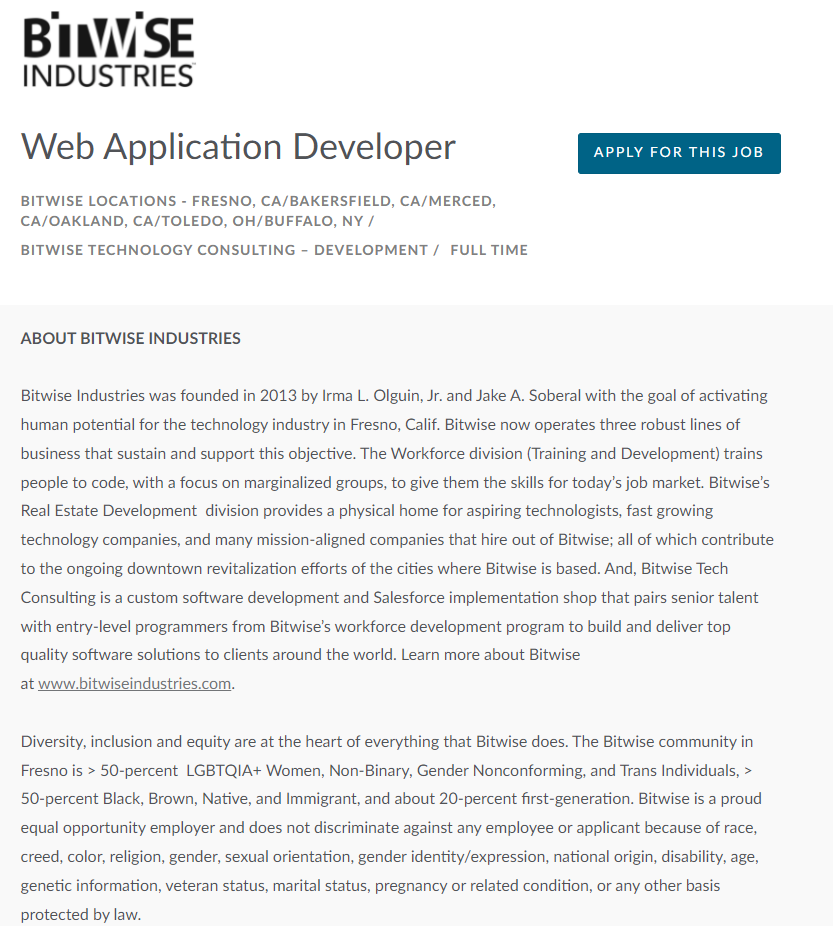
What did the research tell us about employee testimonials?
When it comes to employee testimonials in video format, the findings of our research showed small and medium-sized companies were the most likely to feature videos that felt authentic, compared to their larger counterparts, which preferred professionally produced content. While this might seem like a resources issue, having unpolished videos is actually beneficial. It feels more authentic and relatable to viewers. Overly produced, corporate video content can often give the impression that an employer is unapproachable or distant. Shorter videos – we’re talking 60 seconds or fewer – that are natural and unscripted are more impactful, especially if they allow for an emotional connection.
People are twice as likely to share video content with their friends than any other type of content, including social media posts, product pages and blog posts/articles. However, the results of our research revealed that just 26% of the companies we evaluated had video testimonials. We expected this figure to be a lot higher. On a positive note, all the companies that had video testimonials featured someone from a visible diversity demographic. Highlighting diversity at the very start of a candidate’s journey is vital, especially when you consider one in three employees and jobseekers (32%) would not apply to a job at companies where there is a lack of diversity among their workforces.
The best employment branding resources — straight to your inbox.
Modernize your brand
The demand for talent will continue to outstrip supply for the foreseeable future– and beyond. Companies that treat their people well will find it easier to attract and retain talent. But as workplaces and candidate expectations evolve, so too must employment brands. Review your employment brand continuously and benchmark it against your competitors to see how you can differentiate your company and position as an employer of choice. It should truly align with your employee value proposition (EVP) and the employee experience. Be sure to promote your employment brand on the platforms favored by potential candidates or your company will struggle to find the talent it needs to excel in the future.
The best employment branding resources — straight to your inbox.
Employee value proposition
Employee stories
Career sites
Channels
Talent community
The best employment branding resources — straight to your inbox.
Here's those that excelled
Large companies (>5,000 employees)
It’s no surprise that large companies have access to bigger budgets and teams to allocate for employment brand awareness. But, because of their size, they risk talent feeling “lost in the mix,” which leads to a disconnected employee experience. To combat this, allocate large-scale resources toward creating smaller-scale talent experiences. Uphold unique and engaging EVPs to specific talent groups that give your organization’s culture a more intimate feel with all the benefits that come from being one of the bigger firms.
Medium companies (>1,000 employees)
Mid-sized companies may appear to have the best of both worlds, but challenges often persist around growing pains. How can you scale the candidate experience or deal with shifting priorities and budgets? These companies must spotlight industry differentiators in their EVP and showcase authenticity in their company culture. Prioritize employee testimonial videos and be transparent about room for advancement. The right talent will be invigorated by the chance to become a part of your growth.
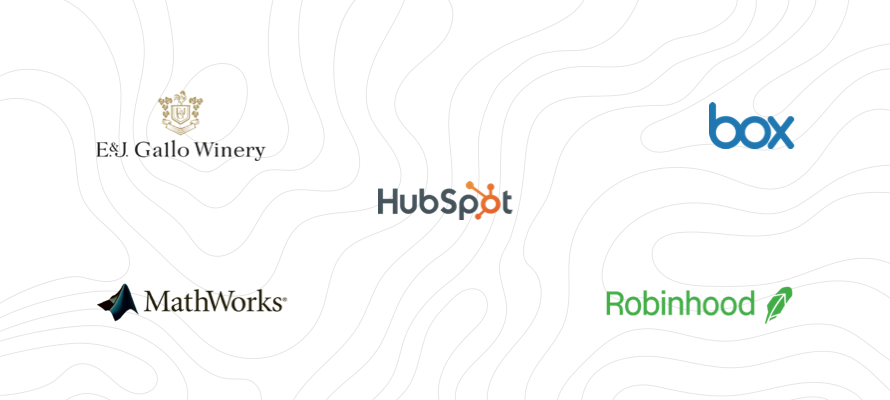
Small companies (<1,000 employees)
Just because you’re small doesn’t mean you can’t be mighty. Smaller companies have more agility and can leverage their unique voice and EVP creatively in ways that bigger companies can’t match. Startups suffer from limited recruitment technology options due to tight budgets and smaller hiring volumes; justifying those expenses upfront can be challenging. Smaller companies should push their advantage with a human-centric approach to the candidate experience. This will ensure a more connected and positive experience, boosting word of mouth and company advocates.

The best employment branding resources — straight to your inbox.
2022 Employment Branding Report methodology updates
Recruitment marketing (19 points)
We increased the number of points in this category from 17 to 19 this year. This change comes from the influx of organizations offering mental health programs and remote work opportunities due to the pandemic. More than 54% of employers lowered or waived costs for virtual mental health services in 2021, annual survey data from Business Group on Health revealed. This increased focus on mental health was already gaining traction before the pandemic and has no signs of stopping anytime soon. Between these findings and our own research, companies with these offerings were seen as attractive employers, so we added points to account for this change.
- Company blog on company website
- Career-specific social media pages on company website
- Video employee testimonials on career website
- Information on benefits, wellness, company perks and culture on career website
- Mental health-specific benefits and programs on career website
- Veteran recruitment program
- University recruitment program
- Remote/virtual recruitment on career website
- Pay equity policy on company website
- Diversity, equity and inclusion (DE&I) recruitment efforts
Career promotion and job advertising (13 points)
This category experienced rapid changes since companies had to be more strategic in how job descriptions were posted and communicated. Formerly just “career advertising,” this category jumped from six to 13 points. It’s no longer about where you have job postings, but what you say and how you say it in a way that entices your ideal candidates. Employees are now more concerned about how they can make a difference in a role and feel like they belong, not just the responsibilities and credentials involved. The criteria includes:
- Job descriptions on career website
- Job posting readability
- Presence of job postings across specific job boards
- Social media posts via organic promotion
Career pages (18 points)
- Career website and mobile accessibility
- Ability to customize accessibility settings on career website
- Talent community/network
- Ability to communicate via chatbot or pre-application on career website
- Application and interview process on career website
- Easy-to-navigate career-related content on career website
Employee and candidate perspectives (38 points)
- Glassdoor culture and values rating, work-life balance rating, compensation and benefits rating, career opportunities rating and diversity rating
- CareerBliss rating
- Company rating on Indeed
- Indeed culture and values rating, work-life balance rating, compensation and benefits rating, career opportunities rating
- Comparably culture rating and diversity rating
- Recognized by CandE Awards
Accolades (4 points)
Rewards weren’t a main priority while companies bounced back from the pandemic this past year, so the points in this category were adjusted from seven to four. Social justice causes, diversity awards and great place to work awards still proved to differentiate and provide morale for employees – so we’ve maintained a scale that addresses this. The criteria includes:
- Accolades accessible from the career website
- Diversity-focused accolades
Corporate social responsibility (CSR) (8 points)
- 2030 United Nations’ Sustainable Development Goals (SDGs) promotion
- Community development programs/initiatives
- Sustainability/environmentally friendly
- Social justice and equality promotion
- Early education programs and promotion
